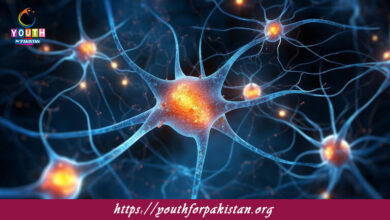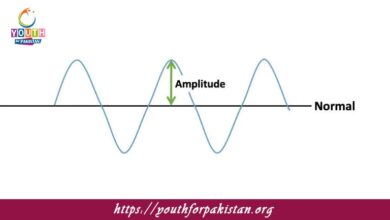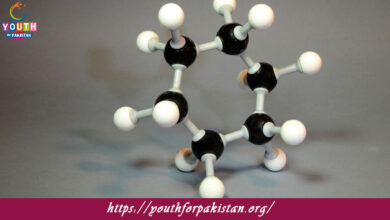Common Ion Effect MDCAT MCQs with Answers

Welcome to the Common Ion Effect MDCAT MCQs with Answers. In this post, we have shared Common Ion Effect Multiple Choice Questions and Answers for PMC MDCAT 2024. Each question in MDCAT Chemistry offers a chance to enhance your knowledge regarding Common Ion Effect MCQs in this MDCAT Online Test.
The common ion effect refers to:
a) The change in solubility of a salt due to the addition of a salt with a common ion
b) The change in pH when a strong acid is added
c) The change in temperature of a solution
d) The change in the rate of a chemical reaction
Which of the following best describes the common ion effect?
a) Decrease in solubility of a salt in a solution containing one of its ions
b) Increase in solubility of a salt in a solution containing one of its ions
c) Decrease in pH of a solution upon addition of a common ion
d) Increase in temperature upon addition of a common ion
The solubility of AgCl in a solution of NaCl will:
a) Increase due to the common ion effect
b) Decrease due to the common ion effect
c) Remain unchanged
d) Increase due to the temperature change
If the solubility product constant (Ksp) of a salt is known, the effect of adding a common ion can be predicted using:
a) Le Chatelier’s principle
b) Raoult’s law
c) Henry’s law
d) The Nernst equation
In a solution containing both CH₃COONa and CH₃COOH, the common ion effect will:
a) Increase the pH
b) Decrease the pH
c) Have no effect on the pH
d) Cause a drastic pH change
Which of the following will have a common ion effect in a solution?
a) NaCl and HCl
b) NaCl and KCl
c) NaOH and HCl
d) NH₄Cl and HCl
The common ion effect can be used to:
a) Increase the pH of a solution
b) Decrease the solubility of a salt
c) Increase the temperature of a solution
d) Increase the rate of a reaction
When a common ion is added to a saturated solution of a salt, the equilibrium will shift:
a) To the left
b) To the right
c) Remain unchanged
d) Depend on the temperature
Adding NaNO₃ to a solution of NaCl will:
a) Increase the solubility of NaCl
b) Decrease the solubility of NaCl
c) Have no effect on the solubility of NaCl
d) Change the color of the solution
The common ion effect is most pronounced in solutions of:
a) Strong acids
b) Weak acids
c) Strong bases
d) Non-electrolytes
In the presence of a common ion, the equilibrium constant:
a) Increases
b) Decreases
c) Remains the same
d) Cannot be determined
The addition of Na₂SO₄ to a solution of BaSO₄ will:
a) Increase the solubility of BaSO₄
b) Decrease the solubility of BaSO₄
c) Have no effect on the solubility of BaSO₄
d) Change the pH of the solution
The common ion effect is an example of:
a) Le Chatelier’s principle
b) Henry’s law
c) Raoult’s law
d) The Nernst equation
In the common ion effect, the addition of a salt containing a common ion will:
a) Increase the pH of the solution
b) Decrease the solubility of a sparingly soluble salt
c) Increase the solubility of a sparingly soluble salt
d) Have no effect on the solubility of a sparingly soluble salt
In a solution with NH₄Cl and NH₃, the addition of HCl will:
a) Increase the concentration of NH₄⁺
b) Increase the concentration of NH₃
c) Decrease the concentration of NH₄⁺
d) Have no effect on the solution
The addition of KNO₃ to a solution of KCl will:
a) Decrease the solubility of KCl
b) Increase the solubility of KCl
c) Have no effect on the solubility of KCl
d) Change the color of the solution
The common ion effect affects:
a) The solubility of salts only
b) The pH of strong acids
c) The rate of chemical reactions
d) The temperature of solutions
Adding Na₂CO₃ to a solution of NaHCO₃ will:
a) Increase the solubility of NaHCO₃
b) Decrease the solubility of NaHCO₃
c) Have no effect on the solubility of NaHCO₃
d) Change the color of the solution
The common ion effect on a weak acid in solution results in:
a) Increased ionization of the weak acid
b) Decreased ionization of the weak acid
c) No change in the ionization of the weak acid
d) Complete ionization of the weak acid
The solubility of a salt decreases due to the common ion effect because:
a) The concentration of ions in solution decreases
b) The equilibrium shifts to the formation of more salt
c) The concentration of ions in solution increases
d) The equilibrium shifts to the dissolution of the salt
The common ion effect is least significant in:
a) Strong acids
b) Weak acids
c) Strong bases
d) Weak bases
Adding NH₄Cl to a solution of NH₃ will:
a) Increase the pH
b) Decrease the pH
c) Have no effect on the pH
d) Increase the solubility of NH₃
In a buffered solution, the common ion effect:
a) Increases the buffer capacity
b) Decreases the buffer capacity
c) Has no effect on buffer capacity
d) Completely neutralizes the buffer
In the common ion effect, the addition of Na₂SO₄ to a saturated BaSO₄ solution will:
a) Increase the solubility of BaSO₄
b) Decrease the solubility of BaSO₄
c) Have no effect on BaSO₄
d) Increase the pH of the solution
When an acid is added to a solution containing its salt, the common ion effect results in:
a) Increased ionization of the acid
b) Decreased ionization of the acid
c) No change in the ionization of the acid
d) Formation of a precipitate
Adding a salt containing a common ion to a solution of a weak acid:
a) Increases the dissociation of the weak acid
b) Decreases the dissociation of the weak acid
c) Has no effect on the dissociation of the weak acid
d) Increases the solubility of the weak acid
The common ion effect is based on which principle?
a) Le Chatelier’s principle
b) Raoult’s law
c) Henry’s law
d) Gibbs free energy
In a solution of Na₂SO₄, the addition of NaCl will:
a) Decrease the solubility of Na₂SO₄
b) Increase the solubility of Na₂SO₄
c) Have no effect on the solubility of Na₂SO₄
d) Change the temperature of the solution
Adding HNO₃ to a solution of NH₄NO₃ will:
a) Increase the concentration of NH₄⁺
b) Increase the concentration of NO₃⁻
c) Increase the solubility of NH₄NO₃
d) Decrease the concentration of NH₄⁺
Which solution will have the greatest common ion effect?
a) NaCl and KBr
b) NaOH and HCl
c) NH₄Cl and NH₃
d) KNO₃ and NaNO₃
The common ion effect in a weak acid solution results in:
a) Increased pH
b) Decreased pH
c) No change in pH
d) Decreased buffer capacity
Adding NaCl to a solution of HCl will:
a) Increase the ionization of HCl
b) Decrease the ionization of HCl
c) Increase the pH of the solution
d) Have no effect on the ionization of HCl
The common ion effect on a weak base in solution results in:
a) Increased ionization of the weak base
b) Decreased ionization of the weak base
c) No change in ionization of the weak base
d) Formation of a precipitate
The addition of NaCH₃COO to a solution of acetic acid will:
a) Increase the dissociation of acetic acid
b) Decrease the dissociation of acetic acid
c) Have no effect on the dissociation of acetic acid
d) Increase the pH of the solution
In a solution containing NaCl and Na₂SO₄, adding NaCl will:
a) Increase the solubility of Na₂SO₄
b) Decrease the solubility of Na₂SO₄
c) Have no effect on the solubility of Na₂SO₄
d) Increase the pH of the solution
The common ion effect can be used to:
a) Precipitate a sparingly soluble salt
b) Increase the solubility of a salt
c) Change the temperature of a solution
d) Decrease the rate of a reaction
The addition of H₂SO₄ to a solution of Na₂SO₄ will:
a) Decrease the solubility of Na₂SO₄
b) Increase the solubility of Na₂SO₄
c) Have no effect on the solubility of Na₂SO₄
d) Change the color of the solution
The common ion effect on the solubility of a sparingly soluble salt is due to:
a) The shift in equilibrium towards the formation of the salt
b) The shift in equilibrium towards the dissolution of the salt
c) The addition of a common ion increasing solubility
d) The change in temperature of the solution
Adding Na₂CO₃ to a solution of NaHCO₃ will:
a) Decrease the solubility of NaHCO₃
b) Increase the solubility of NaHCO₃
c) Have no effect on the solubility of NaHCO₃
d) Change the color of the solution
The common ion effect is least observed in:
a) Strong acids
b) Weak acids
c) Strong bases
d) Weak bases
If you are interested to enhance your knowledge regarding Physics, Chemistry, Computer, and Biology please click on the link of each category, you will be redirected to dedicated website for each category.




